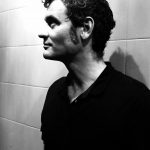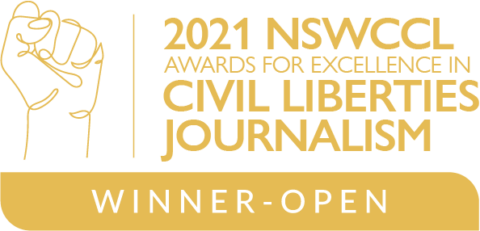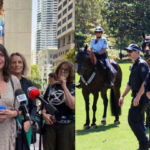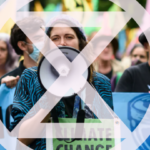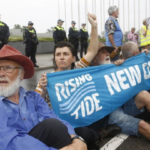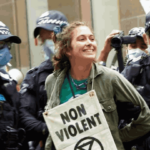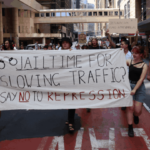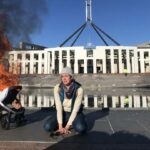“Direct Action Is Serious and Dangerous Work”: Violet Coco on the Whose Future Mobilisations
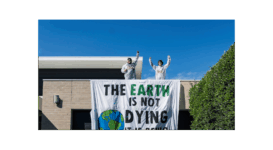
“The earth is not dying. It is being murdered,” read the banner hanging off the side of the house belonging to the chief executive officer of Viva Energy located on Boon Wurrung land in the south of Melbourne. The activists raising the alarm from atop the residence on Thursday, 18 September 2025, were from new social justice and climate defence network Whose Future.
Whose Future catapulted onto the direct action stage on 15 September, when it launched a week of mobilisations across Wurundjeri and Boon Wurrung land in the southeast of the continent. These nonviolent direct actions were notable in that they resembled past climate actions that have been stamped out by oppressive laws in many jurisdictions, and they further took things up a notch.
The action on the Viva chief executive’s house was evidence of this escalation from a network of grassroots activists, some of whom are seasoned veterans who’ve long put their bodies on the line to cause disruption to “business as usual” in order garner public awareness to the fact that the people are being fleeced by corporations and government sponsors profiteering from fossil fuels and war.
“Viva Energy is the sole Australian supplier of the hydrocarbon toluene to the Australian defence company Thales,” outlines a Whose Future press release. “Thales turns it into high explosive TNT to fill 155 mm artillery ammunition shells.”
Further actions involved shutting down Melbourne’s Webb Dock, graffitiing monuments that glorify war, dropping banners over highways and the holding of community workshops.
Whose Future is upping the ante at a point in time, when the mad king from Mar-a-Lago, Donald Trump, has just appeared before the United Nations, calling for a new era of “drill baby drill” fossil fuel extraction, while he further held a press conference with the genocidal Israeli PM Benjamin Netanyahu, which involved presenting the ethnic cleansing of the Gaza Strip as a liberatory act.
Sydney Criminal Lawyers spoke with activist Violet Coco, about the new network that is Whose Future, and the long-term social justice and climate agitator filled us in on why it is raising the stakes in terms of direct actions, the intersections between the cause of climate and the antigenocide movement, and she further insisted that at this stage in the game, failing to take action is dangerous.
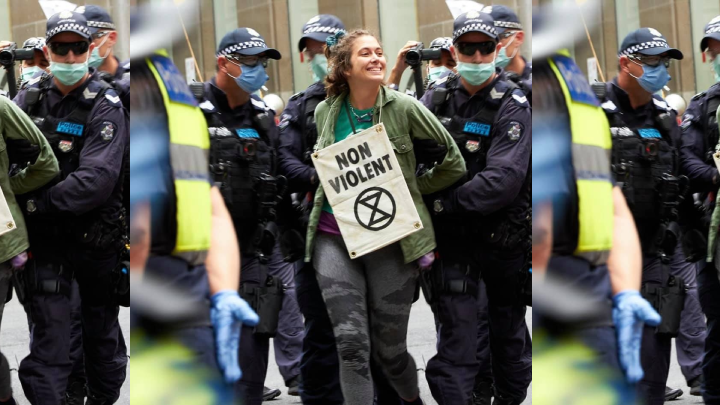
New social and climate justice network Whose Future launched with a week of nonviolent direct actions in Naarm-Melbourne commencing on Monday 15 September 2025.
The actions that filtered through over social media reminded of past climate actions that the authorities have tended to supress over recent years, but they also appeared to have escalated and broken new bounds in certain ways.
Violet, can you fill us in on the nature of the new colourful and tactical direction that Whose Future is taking on Wurundjeri and Boon Wurrung lands?
There are three key escalations that this mobilisation embodies. The first is that Whose Future is a call to action. It is a call to action that is not saying, “join our banner”.
It is rather recognising the ecosystems of interconnected issues – from the genocide in Gaza being fuelled by the extraction of minerals from displaced First Nations people’s land on this continent – that corrupt systems of power are allowing to perpetuate.
Whose Future is calling on people to resist, reorganise and reimagine within their current teams, rather than buying a new t-shirt, when the new group with the new banner turns up.
The second point is it has some well targeted property damage involved. There is lots of paint. The paint comes off but we can never have the Palestinians lives back from the genocide or have the destruction of our natural world returned.
Thirdly, and possibly the biggest aspect to Whose Future’s mobilisation, was the occupation of a home of a CEO. This is the chief executive of Viva.
Viva is complicit in the genocide in Gaza, as it produces TNT that is in bombs being dropped on children, and it is also destroying our liveable world by progressing the largest fossil fuel project in Victoria. So, this was the home of CEO Scott Wyatt.
What other actions has Whose Future recently carried out on Wurundjeri and Boon Wurrung land across Greater Melbourne?
The actions have entailed everything from guerrilla gardening, mutual aid to the provision of free food to people outside supermarkets, along with the disruption of the port of Naarm and the largest economic hub in the area.
There were actions against weapons companies, like Maersk. There were updates provided to capitalistic billboards of tech companies, like Apple, highlighting the links to unethical minerals extraction.
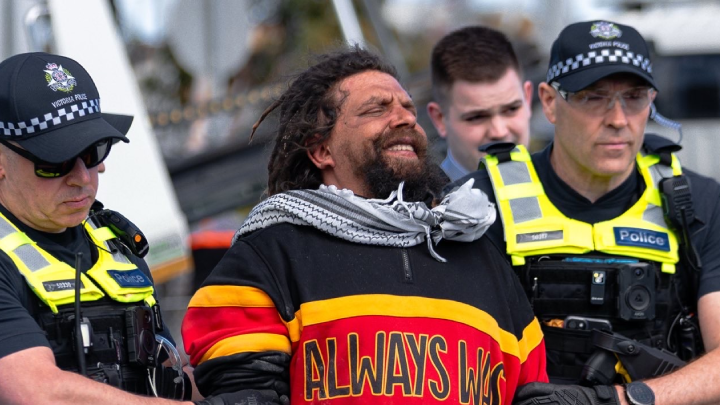
On viewing some of the direct actions Whose Future has recently undertaken, it seemed apt that participants were stepping it up a little.
So, can you tell us why the autonomous individuals participating in Whose Future consider it necessary to up the ante? What is it about the current state of the planet that warrants extra effort?
The future is not looking good. The current system is failing everyone, and people are increasingly asking what their lives might look like in the future given the intensifying climate chaos crisis, and crises of housing, cost-of-living, as well as gendered and racial violence.
These crises are actively perpetrated by colonial governments here and abroad, and there is a debate raging about what the future of this continent could look like.
Those with wealth and power have a monopoly on shaping the future, as well as the horizon of these possible actions. They are actively propagating ideas that distract from the ways that they have concentrated power and rigged systems to allow them seemingly endless profit at the expense of people and place.
To combat this, we believe it is important to ask whose future is being destroyed, whose future is being stolen and whose future will become a reality.
These questions are best answered by exploring different narratives and celebrating alternative ways of living. Protest, collective action and dialogue are the sunlight and rain that allow alternative visions to grow.
History has shown us that when people stand together, they can shift the ground beneath oppressive systems and give communities the opportunity to enact the change they want to see.
This requires everyone to resist, reimagine and reorganise, which in turn invites us to link struggles, build collectives, care for land and water, share knowledge, practice mutual aid and engage in a wide range of protest activities, civil disobedience, striking, blockading and other forms of economic disruption.

Whose Future is a new network, which involves some veteran social justice activists. Can you tell us a bit about the Whose Future crew without getting anyone into deep water?
What is important is that we are the people. The 99 percent. We are mothers and daughters. We are sons and fathers. We are those who refuse to surrender to those who would greedily take more than their share.
As you say, there are a few people in the movement who have been doing this for a while, and the genocide in Palestine has activated quite a few more people. So, there are new people filtering into the resistance every day: those who have had the veil lifted.
We are the 99 percent.
The activist network is asking whose future is being stolen from them and whose future has already been destroyed. Can you talk about why these points are important?
A key goal of Whose Future is to link the struggles between the military-industrial complex that is weaponising Israel and fuelling the genocide in Gaza to the colonial project that led to the genocide here on this continent, and the way that the military displaced First Nations people here, which led to a system that asserts property rights to extract from their land.
The minerals that are being extracted on this continent that are fuelling the climate chaos are also being used to fuel the military that is perpetrating the genocide.
What we are talking about when we ask whose future is being stolen and whose future has been destroyed, we are talking about First Nations people all around the world, at the hands of the colonial project.
In moving forward with this colonial project, what we are going to see in the future and whose future would we see flourish? If we allow the military-industrial complex to progress, it will not be the people’s future that is saved. It will not be the 99 percent who are served.
The billionaires in their bunkers will be served by the current system. I don’t know if you have read the Tim Winton book Juice, but it reveals that it will be a very difficult future for us all.
We the people need to reimage how we structure ourselves to support each other.
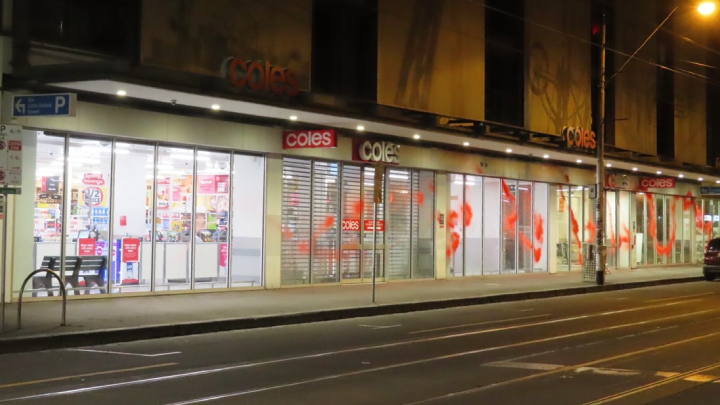
Whose Future is raising questions about what a future beyond the current systems might look like. Can you elaborate on what is being envisioned into the future?
A future beyond these systems is a future of care. It’s a future where we have liberation for all people. This is a future of freedom and no war. A future where resources are shared. It is a sustainable future for all life on this planet.
And lastly, Violet, Whose Future has only recently made its direct action splash upon the landscape of Naarm.
So, can you talk about what the group is planning moving on, and whether it is viable to take these sorts of actions in other states considering the laws that have been enacted over the last decade?
It’s not viable not to take these actions in other states. It is too dangerous not to stand up. It is dangerous not to attempt to change the trajectory we are on.
We are seeing a rise in fascism and violence from the right. We need power and unity to protect all people.
Direct action is serious and dangerous work. The billionaires do not want to relinquish their control of resources and the subsequent destruction of them through extraction and consumption beyond the planetary limits.
All over the country, there are support networks to take action and create a better future, and so, it is really about connecting with those networks and learning to take action in a way that is relative to your capacity.
If you want to join the frontline to create a better future, then join your local street marches and public protests, and from there, build community and learn about the way that we care for each other to create a better world.
Maybe your job will be painting the banners. Maybe your job will be writing the media releases, or maybe your job will be getting arrested from the top of a tripod or on top of a CEO’s building.
Only you know what you are capable of, and you only know once you join – so join up.
